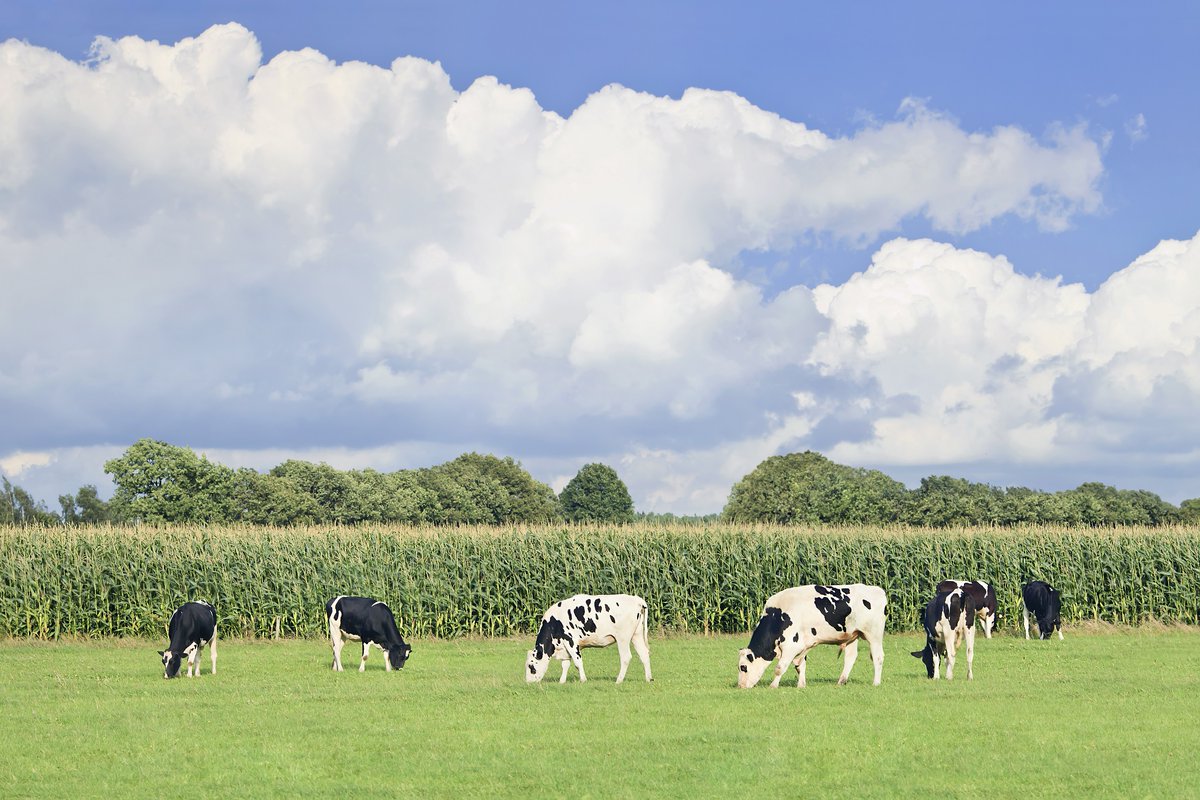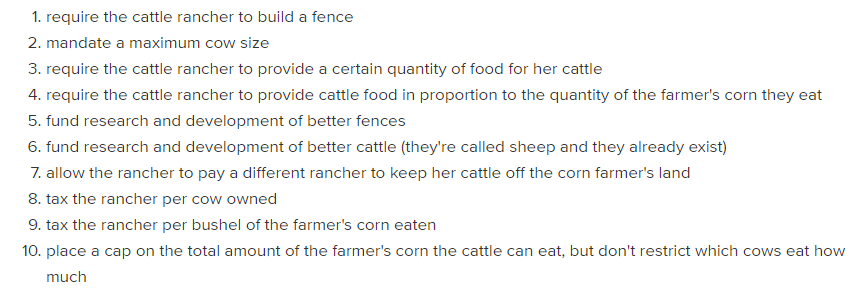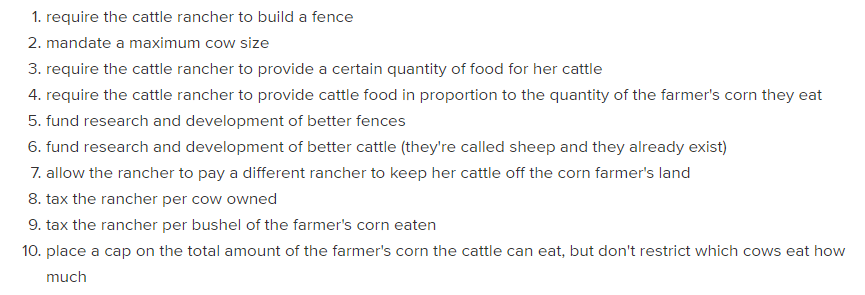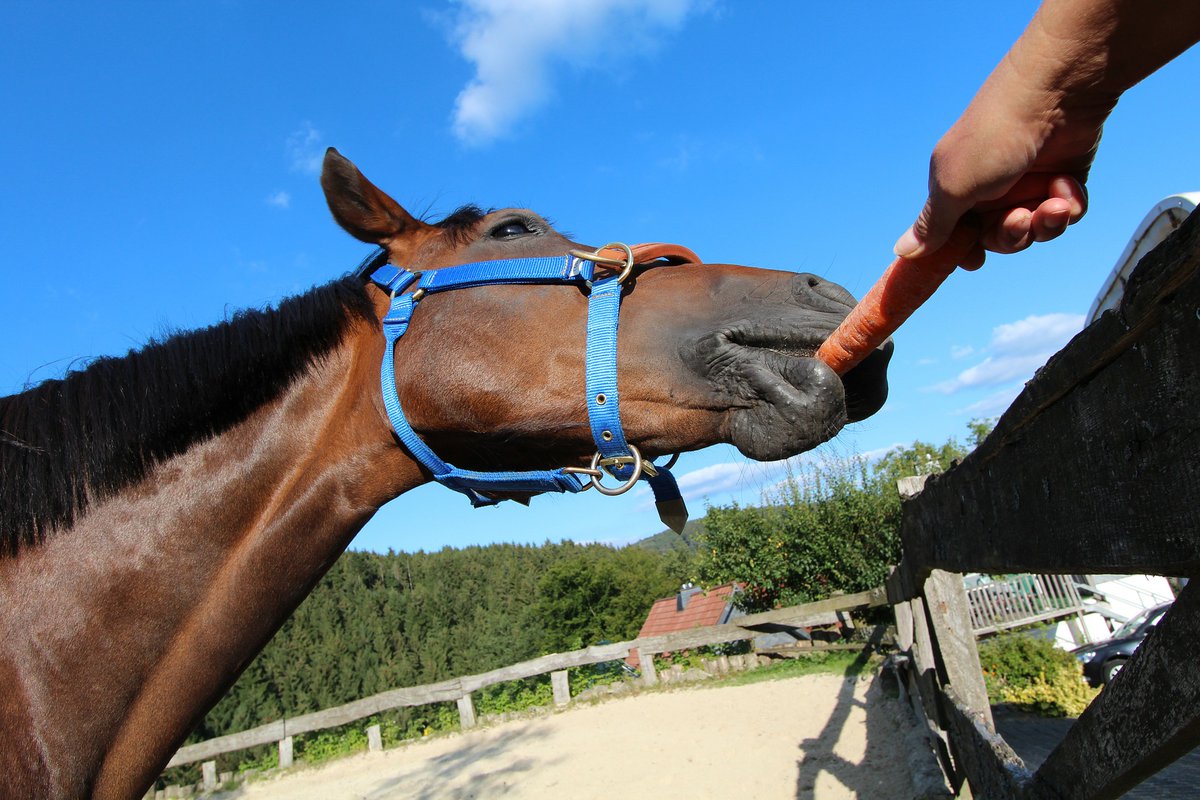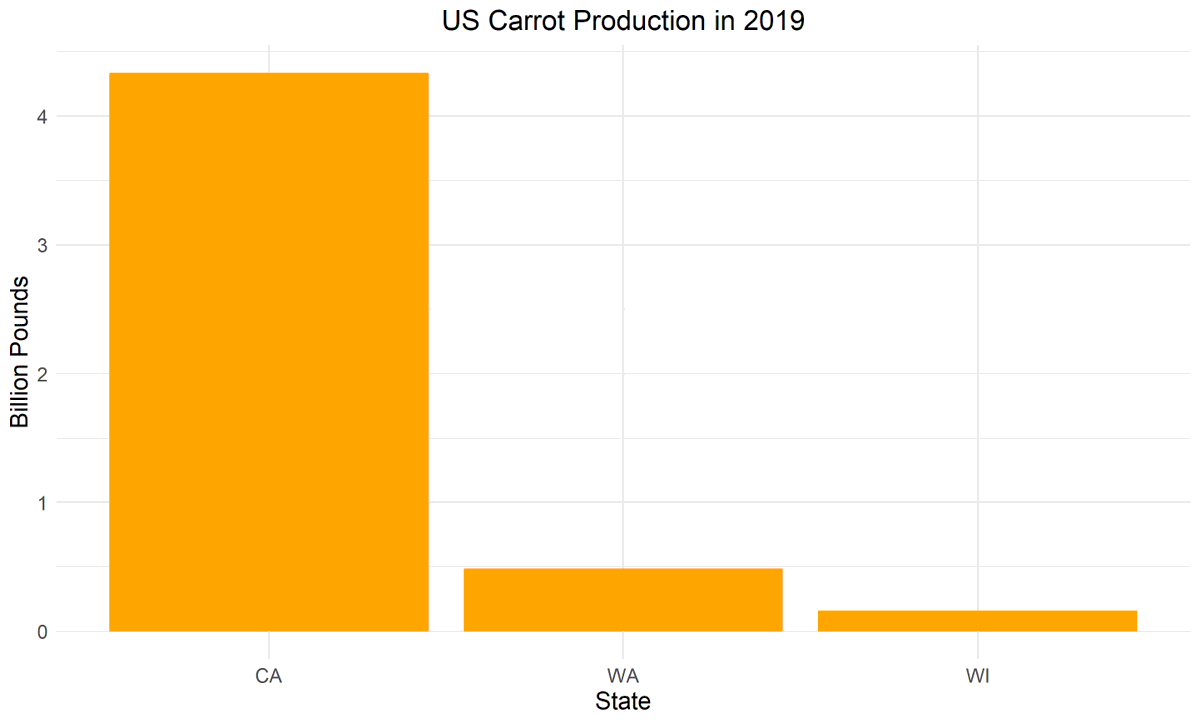1. This week in Ag Data News, reducing pollution requires carrots to cajole good behavior or sticks to punish bad behavior. Everyone has an opinion about which approach is best, except for the economists who argue it doesn't matter. https://asmith.ucdavis.edu/news/carrots-or-sticks
2. People often mislearn in economics class that carrots and sticks are equally effective. This lesson follows from a theory by Ronald Coase. I say "mislearn" because the theory relies on important caveats that limit its applicability in the real world. https://en.wikipedia.org/wiki/Ronald_Coase
3. Coase used the example of a rancher whose cattle live on pasture next to a farmer's corn field. There is no fence, so the cattle enter the corn field and eat the corn. Should the cattle rancher be liable, or should the farmer be responsible for keeping out the neighbor cattle?
4. Coase argues that it doesn't matter, as long as liability is clearly defined, but he states two caveats: the parties (i) can negotiate freely, and (ii) know the cost of the problem and its potential solutions. https://en.wikipedia.org/wiki/The_Problem_of_Social_Cost
5. If the government in a Coasean world deemed the cattle rancher liable, then the two parties would negotiate acceptable compensation to the farmer for crop damage, or the rancher would build a fence if that were less expensive.
6. On the other hand, if the corn farmer were responsible, then the two parties would negotiate an acceptable payment to the rancher to reduce crop damage, or the farmer would build a fence if that were less expensive.
7. In a Coasean world, we get the same number of cattle, the same amount of corn, and the same mitigation cost no matter which party is held responsible for the damage. The only difference is who pays.
8. Real-world pollution policies are decidedly non-Coasean. They employ regulations, standards, and complicated trading schemes, rather than merely assigning liability and getting out of the way. For the cattle-eating-the-corn problem, here are some real-world policy analogs:
9. For those scoring at home, (1) is old-fashioned regulation, (2) is CAFE or appliance standards, (3) is the RFS, (4) is the LCFS or RPS, (5)&(6) are R&D subsidies, (7) is offsets, (8) is a VMT tax, (9) is a Pigouvian tax, and (10) is cap and trade.
10. Economists often react to such policy lists with exasperation because they appear inefficient. These economists say that policy makers should impose a pollution tax or implement a cap-and-trade program, and then they should eliminate all the other policies.
11. By setting the tax or cap, they resolve the problem raised by Coase's first caveat: in the real world there are too many affected parties for everyone to negotiate a solution with everyone else. As in the Coasean case, it doesn't matter whether they choose the tax or the cap.
12. The tax would be a stick; the cap-and-trade program would be a carrot for those who pollute below their share of the cap and a stick for those above. Either would produce the desired outcome at lower cost than the other policies, all of which prescribe certain actions.
13. But, this analysis ignores Coase's 2nd caveat: we know the costs of the problem and solutions. Pollution costs are often hard to measure, which means the affected parties will disagree, creating barriers to mitigation. The best solutions often haven't been invented yet.
13. By analogy to Coase's example, the solution to many cattle-eating-the-corn problems is a new type of fence that is yet to be invented. We need to fund R&D in fence design and figure out how to transition away from the current fence technology. Transition may require carrots.
14. Solving pollution problems often requires two things: (i) new technology and (ii) a disruptive transition to the new technology. Policy should focus on wide-ranging R&D and judicious use carrots and sticks to manage the politics and economics of the transition.
15. Does this mean we should pay dairy farmers to capture methane from dairy manure and turn it into biogas, rather than mandating reduction of those emissions? Does it mean we should subsidize oil refineries to re-purpose for RD production? https://asmith.ucdavis.edu/news/cow-power-rising
16. Does it mean we should pay farmers to preserve soil carbon? I don't know, but I think research into these questions should highlight facilitating transition, rather than comparing their efficacy to a hypothetical Pigouvian tax or C&T program. https://asmith.ucdavis.edu/news/could-lcfs-incentivize-midwestern-corn-farmers-sequester-carbon
17. Once more, here's the article. https://asmith.ucdavis.edu/news/carrots-or-sticks
Postscript: This would have been my first Ag Data News article without data or a chart. We can't have that, so here's US carrot production.
Postscript: In writing this article, I learned that people on the internet are wrong about carrots and sticks. Some people think the term refers to tying a carrot to a stick and holding it in front of a donkey. http://archive.boston.com/bostonglobe/ideas/articles/2009/03/08/carrot_unstuck/

 Read on Twitter
Read on Twitter